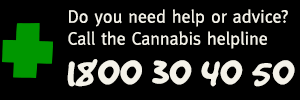Teacher's Directory
Need resources about cannabis and the law, mental health, relationships, or the body to use in the classroom?



Cannabis and mental health for teachers
Heavy use of cannabis starting at a young age has been linked to serious long-term side effects on mental health. Many young people are unaware that having a joint can trigger drug-induced psychosis or illnesses such as schizophrenia in vulnerable people. NCPIC has some great resources relating the effect of cannabis on the brain, that can be shared with young people either in a classroom setting, designated for homework, or shared for their personal use:
Top 4 effects of marijuana on the brain
A short factsheet with the key things young people need to know that links to more information for those who are curious.
Cannabis and the teenage brain
A short animated YouTube video produced by Turning Point in 2025 with easy to understand graphics and language.
Cannabis and mental health fast facts
A small fold-out question and answer style booklet that could be used to up-skill fellow staff.
Cannabis Facts: clearing the smoke
Two – four minute video segments from NCPIC’s 2012 documentary ‘Clearing the Smoke’, which are appropriate for older high school students.

Cannabis and the body for teachers
If you’ve watched the news, you know that drugs can affect physical performance – especially when it comes to sport. Cannabis can also have a range of other effects on the body, including links to development of respiratory illnesses.
The following resources highlight some of the physical effects on cannabis use and will help young people understand the dangers.
A quick update on how cannabis affects sporting performance.
A short Q and A written for young people.
A quick overview of the effected of mixing weed with other drugs.
Is driving stoned safe?
A short Q and A written for young people. Podcasts also available.

Cannabis and the law for teachers
In Australia, laws relating to cannabis use, possession and dealing are determined at a state and territory level – meaning penalties and provisions vary across Australia. These differences, combined with recent high-profile changes to laws around the world, mean it is not unusual for young people to be confused about exactly what the law is in their area.
The fact is, being caught in possession of cannabis as a minor, especially if it happens more than once, can impact a young person’s future. If a criminal record is created, anything from job prospects through to international travel can be at risk.
Check out these three great teaching or information tools:
If you’re looking for a quick way to get the message across, in writing, with no confusion, try our factsheet developed especially for young people: 8 things you need to know about cannabis and the law. While it doesn’t detail every law in each state, it gives a great, brief overview that ensures students understand that cannabis is illegal in each and every state of Australia.
Each year, NCPIC holds two competitions for young people – a poster competition for 12-18 year olds, and a short film competition for 15-25 year olds. Both offer cash prizes worth several thousand dollars, and encourage teenagers and young adults to think about a cannabis-related theme. In 2024, the theme for both competitions is: ‘Synthetic Cannabis.’
Cannabis and the law factsheet
A thorough factsheet that outlines the law on possession in each state and territory in Australia. In addition to these tools, asking young people to share stories about things they’ve seen or know of can help break the ice and make the topic less taboo and easier to talk about openly.
Links to information about cannabis and the law from all around Australia.

Cannabis and friends for teachers
When it comes to drugs, cannabis can cause teenagers to worry about each other, put pressure on each other and isolate themselves or someone else.
The following resources will help you talk to young people about cannabis use as it relates to their friends and provides them some good tips for tricky situations:
Looking after a friend on cannabis factsheet
Quick information written for young people
Concerned about someone’s cannabis use? Fast facts on how to help.
A small fold-out booklet appropriate for a variety of audiences, including students







